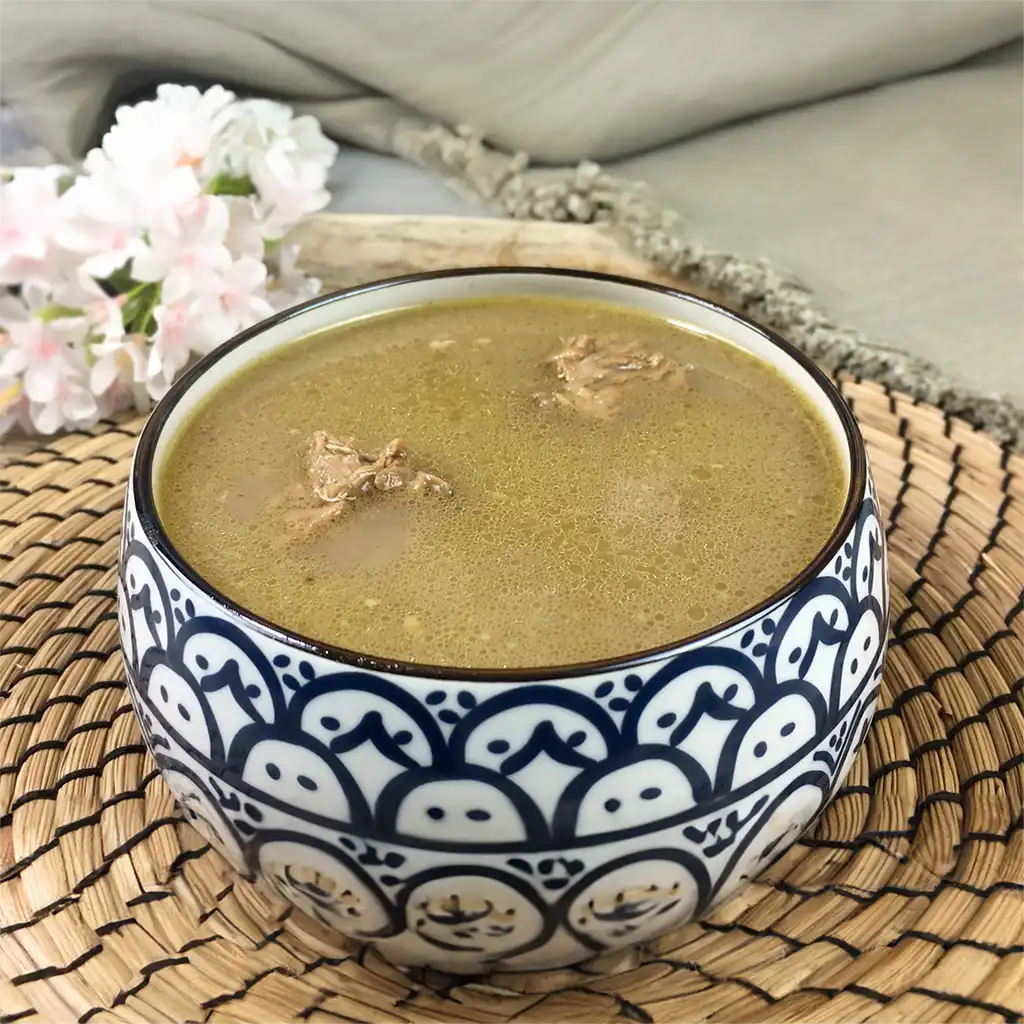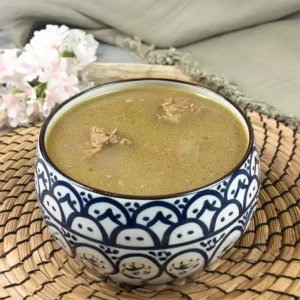
Welcome to the world of flavors with Mutton Yakhni! This dish boasts a rich history, originating from the Kashmir region of India.
Yakhni, derived from the Persian word “Yakh,” meaning broth, is a traditional dish characterized by its aromatic broth infused with spices and tender mutton pieces.
Despite its luxurious taste, Mutton Yakhni is surprisingly simple to prepare, making it a perfect choice for both novice and experienced cooks alike.
The combination of tender lamb simmered in fragrant spices creates a dish that is both comforting and deeply satisfying. So, let’s dive into the world of Mutton Yakhni and experience the warmth and richness it brings to the table.
Expert Tip: For enhanced flavor, toast the whole spices (black cardamom, peppercorn, cinnamon, cloves) in the olive oil before adding the onions. This step helps release their aromatic oils, intensifying their flavors.
Olive Oil: Olive oil not only adds richness to the dish but also helps in enhancing the overall flavor. Its subtle fruity notes complement the spices and mutton perfectly, resulting in a well-balanced dish.
Lamb: Lamb provides a hearty and robust flavor to the yakhni. Its tender texture absorbs the aromatic spices, creating a melt-in-your-mouth experience.
Black Cardamom (Bari Elaichi): Black cardamom lends a smoky and earthy flavor to the dish, adding depth to the broth. Its warm and intense aroma infuses the yakhni with a distinct character.
Peppercorn: Peppercorns contribute a subtle heat and pungency to the yakhni, balancing the flavors and adding a kick to each spoonful.
Cinnamon (Darchini): Cinnamon adds a sweet and woody aroma to the dish, enhancing its overall warmth and complexity. Its subtle sweetness complements the savory notes of the lamb.
Cloves (Laung): Cloves offer a strong and aromatic flavor profile to the yakhni, imparting a warm and slightly bitter taste. They add depth and richness to the broth, elevating its overall taste.
Onions: Onions provide a savory base for the yakhni, adding sweetness and depth to the broth. When cooked down, they become soft and caramelized, enhancing the overall flavor and texture of the dish.
Ginger Paste: Ginger paste adds a zesty and pungent flavor to the yakhni, cutting through the richness of the lamb and spices. Its subtle heat and brightness add a refreshing contrast to the dish.
Garlic Paste: Garlic paste offers a bold and aromatic flavor to the yakhni, enhancing its depth and complexity. Its pungent taste balances the sweetness of the onions and the richness of the lamb.
Salt: Salt is essential for seasoning the dish, enhancing the natural flavors of the ingredients and bringing out their full potential.
Black Pepper: Black pepper adds a spicy and earthy flavor to the yakhni, complementing the other spices and enhancing the overall taste profile.
Expert Tip: Be patient while simmering the yakhni. Slow cooking allows the flavors to develop fully and ensures tender, succulent mutton.
Expert Tip: Serve Mutton Yakhni hot with steamed rice for a comforting and satisfying meal that is sure to impress your family and friends.
Absolutely! While traditional Mutton Yakhni calls for lamb, you can easily substitute it with other meats such as goat, beef, or even chicken. Just keep in mind that different meats may require adjustments in cooking time to ensure they are cooked through and tender.
Of course! Feel free to adjust the spices to suit your taste buds. If you prefer a milder flavor, you can reduce the amount of black pepper or omit certain spices altogether. On the other hand, if you love a bit of heat, you can increase the amount of black pepper or add a pinch of red chili powder for an extra kick.
Yes, you can! In fact, Mutton Yakhni tastes even better the next day as the flavors have had time to meld together. Simply store it in an airtight container in the refrigerator for up to 3-4 days. When ready to serve, gently reheat it on the stove or in the microwave until warmed through.
Here are some more recipes for you to enjoy! If you my recipes don’t forget to rate and leave a comment.
If you have any recipe suggestions, please do not hesitate to ask me. A great way to stay in contact with me is through Instagram, Facebook, Twitter and YouTube. Don’t forget to tag me @CookwithNabeela in your recipe photos!

Subscribe now to receive my latest recipes directly in your inbox. Stay up-to-date and never miss out!

I love to cook! I want to share with you my favourite, delicious family-friendly recipes. I want to inspire you to create fantastic food for your family every day.
Latest comments (2)
A delicious and easy recipe that isn’t too heavy on the spices. I was a little unsure how this would turn out at first but this recipe is definitely a keeper. The perfect winter warmer for those cold nights. The kids loved it. Thank you for sharing.
Thank you so much for trying out the recipe! I’m thrilled to hear that it turned out well and that the whole family enjoyed it. Your feedback is greatly appreciated!